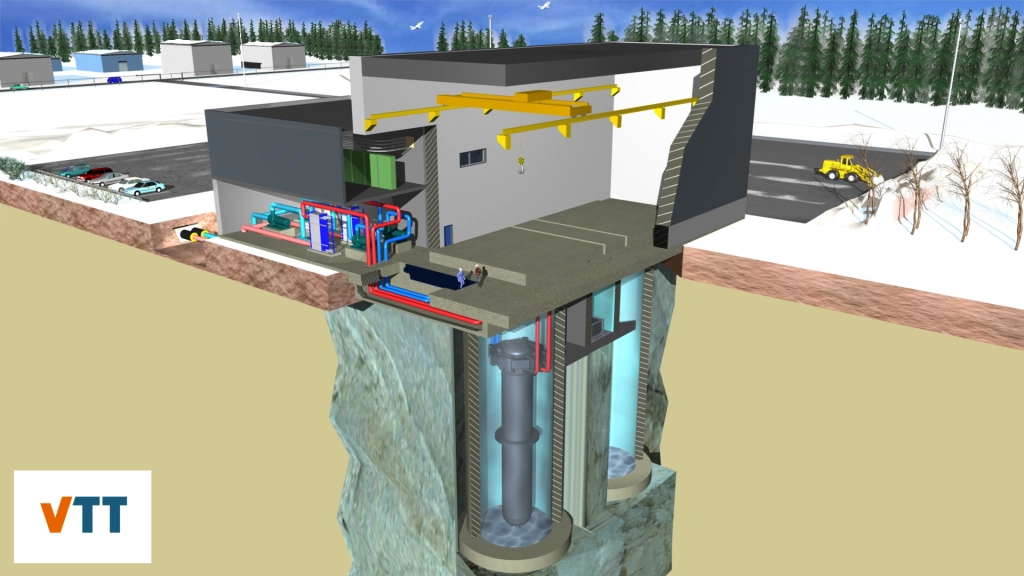VTT is developing reactor technology for district heating
District heating is the most common form of heating in Finland, covering some 50% of houses, residential and commercial buildings. Heating is also a major contributor to greenhouse gas emissions. More than 80% of domestic electricity production comes from low-carbon sources (35% nuclear, 19% hydro, 18% biomass, 9% wind, 0.2% solar), but fossil fuels are still widely used for heating. In 2019, the Finnish government issued a moratorium for coal in energy production by the end of the decade. This is expected to create a vacuum in the heat market, to be filled by other low-carbon sources.
The use of nuclear energy for district heating was extensively studied in the aftermath of the oil crises of the 1970’s. At that time, nuclear district heating reactors were considered an economically viable option. The idea was eventually abandoned for political reasons, and coal became the fuel of choice for large cities. With the phase-out of fossil fuels, the nuclear option has re-emerged. According to techno-economical studies carried out at VTT Technical Research Centre of Finland in 2019, nuclear reactors can still be considered a competitive alternative for heat production (https://doi.org/10.1080/15567249.2019.1595223).
It is important to note, however, that the heat market differs fundamentally from electricity. Instead of a nationwide power grid with connections to neighboring countries, heat is supplied by local networks that operate independently. In addition to large cities, there are more than 100 communal district heating networks with a total capacity of only 50 to 200 MW. This, in turn, implies that most of the existing reactor designs, including SMRs, are actually too large for the Finnish needs. The market potential is not limited to Finland either. District heating is commonly used especially in the Eastern Central Europe, where there is also considerable pressure to reduce carbon emissions.
Developing a nuclear reactor specifically for district heating applications brings some considerable advantages. The operating temperature of district heating networks varies between 65–120°C, which can be reached with conventional light water reactors. The operating pressure can be reduced from the typical 120–150 bar for PWRs to less than 10 bar, i.e. the equivalent of a household espresso machine. This reduces the load on reactor components, which in turn simplifies the manufacturing processes. Since the production is not limited by thermodynamic efficiency, the unit size can be smaller compared to electricity-producing SMRs. The turbine plant is left out, which reduces the capital costs.

In February 2020, a project was launched at VTT to develop a nuclear district heating plant for the Finnish market. The developed technology is called the Low-Temperature District Heating and Desalination Rector, or LDR. The desalination option was kept in the name since this is another potential application for low-temperature reactors, even though the work is currently focused on heating. A number of technical boundary conditions were set for the reactor concept. To enable fast deployment, the design should rely on conservative and proven LWR technology, without major unconventional features, materials or manufacturing techniques. Safety design should be based on passive cooling, taking advantage of the low operating temperature and pressure. For licensing it is important that the technology is compatible with the Finnish final disposal concept and the regulatory guidelines.
The district heating plant may consist of one or several LDR-50 reactor units, each producing 50 MW of heat at 65–120ºC temperature. The design combines conventional LWR technology with innovative passive containment function. The reactor core is essentially a boron-free SMR, comprised of 37 standard PWR-type fuel assemblies truncated to a shorter active length. Primary coolant flows inside the reactor vessel under natural circulation. Decay heat removal is accomplished by passive convection without any mechanical moving parts. Several siting options are currently under consideration, including above-ground heating plant constructed on an industrial site, underground rock cavern and retro-fitting into a decommissioned fossil power plant.
The pre-conceptual design phase was completed by the end of 2020. The results of core design and safety analyses will be presented in papers submitted to the ICONE-28 international conference in August. The project is currently moving towards preliminary technical design. On-going work includes simulation and techno-economic analyses of realistic operating scenarios, as well as the design and optimization of primary heat exchangers in collaboration with LUT University. On the broader scope the project connects to a national ecosystem EcoSMR, formed by research organizations, technology suppliers and end users within the nuclear field. The work also covers streamlined licensing procedures, taking into account the specific features of SMRs. For district heating reactors the key topics include passive safety and emergency planning zones, since the heating plants must be constructed close to consumption.
Jaakko Leppänen
VTT
jaakko.leppanen@vtt.fi